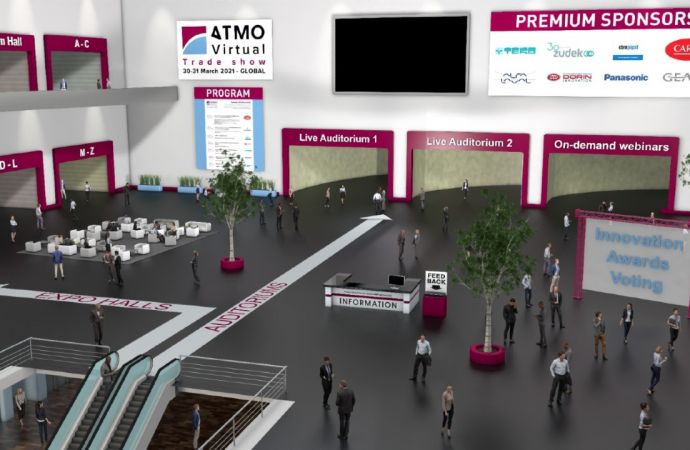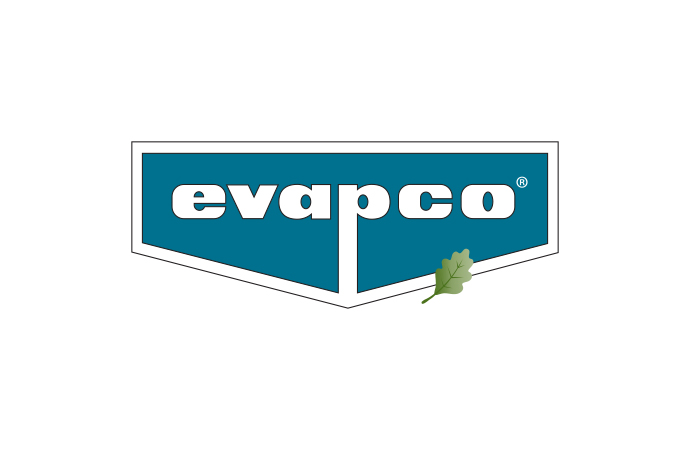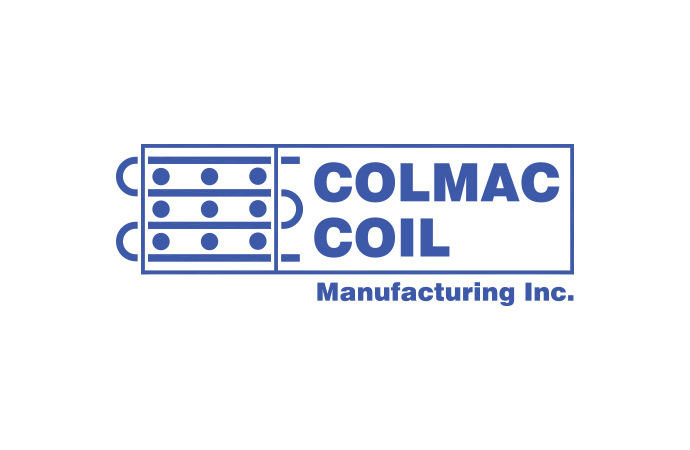Close to 400 decision makers from policy and industry gathered in Bangkok, Thailand on 21-22 July 2012 for the ‘Advancing Ozone & Climate Protection Technologies: Next Steps‘ conference that preceded the 32nd meeting of the Open Ended Working Group of the Parties to the Montreal Protocol. Two of the presentations discussed the application of industrial ammonia/CO2 solutions in Thailand and China, as well as smaller capacity ammonia chillers for air conditioning (AC) in

In this article, ammonia21.com provides a summary of presentations provided by Jean-Claude Logel, Axima Refrigeration France and Jiang Chaoming, Yantai Moon, China.
NH3/CO2 cascade system installation in Thailand
Following Nestlé’s strong demand to specify the use of natural refrigerants, Axima Refrigeration France first developed NH3/CO2 solutions in 1997 according to Mr Logel’s presentation. The first one was a 1200kW at -35°C ammonia system with CO2 as brine in Beauvais, France before moving on to cascade NH3/CO2 solutions as of 2000. With installations already in Russia, CH, UK and France, today the company is installing a 6MW refrigeration NH3 / CO2 cascade system in Bangkok, Thailand.
Highest efficiency and energy savings
The NH3/CO2 cascade plant is fitted with the latest energy efficient technologies, as a result of which the total energy savings compared to standard NH3/CO2 design is about 13% or 2,780,000 kWh/year, translating to €243,000 and 5.42 tonnes CO2eq. To maximise energy savings the system features:
Regarding direct emissions, the benefit for the planet is 1,905 tonnes/year eq CO2 or 366 cars driving around the world when compared to an R404A solution (assuming 5000kg, leakage rate 10%).
Africa: Several installations of small capacity plug & play NH3 chillers for AC
Axima also has several installations in Africa of small capacity ammonia ‘plug and play’ chillers for AC including the following for Nestlé:
The carbon footprint reduction achieved by the ammonia chillers compared to an R134a chiller amounts to 12 tonnes CO2/year, equivalent to driving 2 times the Earth’s circumference with a 4HP diesel vehicle.
Concluding his presentation, Mr Logel noted: “Use natural refrigerants to minimise global warming? - Yes we can”.
Update on Chinese demo project for plant conversion to NH3/CO2
During the same session, Yantai Moon, the first enterprise in China to carry out technical research and application of CO2, provided an update on the status of a demonstration project for the conversion from HCFC-22 to NH3/CO2 technology in the manufacture of two-stage refrigeration system for cold storage and freezing applications.
The presenter noted that Yantai Moon is already at the stage of promoting market sales, as the project has already successfully passed four out of five planned inspections, with the fifth stage of work ongoing and final inspection expected in October 2012:
To date, the company has worked on two prototype projects in China, one installed for Yantai Fengrun, a local fruit pudding supplier to McDonald’s, and the other for Weihai Jiuye, a Chinese export-seafood supplier. Although the initial investment for the NH3/CO2 cascade refrigeration system is a bit higher than for a two-stage automatic screw refrigeration system, the electricity consumed at Fengrun is 11.1% lower than an ammonia two-stage refrigeration system, offering an attractive payback period.
NH3/CO2 cascade system installation in Thailand
Following Nestlé’s strong demand to specify the use of natural refrigerants, Axima Refrigeration France first developed NH3/CO2 solutions in 1997 according to Mr Logel’s presentation. The first one was a 1200kW at -35°C ammonia system with CO2 as brine in Beauvais, France before moving on to cascade NH3/CO2 solutions as of 2000. With installations already in Russia, CH, UK and France, today the company is installing a 6MW refrigeration NH3 / CO2 cascade system in Bangkok, Thailand.
Highest efficiency and energy savings
The NH3/CO2 cascade plant is fitted with the latest energy efficient technologies, as a result of which the total energy savings compared to standard NH3/CO2 design is about 13% or 2,780,000 kWh/year, translating to €243,000 and 5.42 tonnes CO2eq. To maximise energy savings the system features:
- Design with lower delta T on heat exchangers
- Increased temperature level: for example for air conditioning the water temperature is 9°C instead of 6°C, resulting in about 40 kW less absorbed power
- Fans with high efficiency for equipment with air heat exchangers: 70kW less
- Heat recovery for processes, saving heating costs and improving refrigeration plant efficiency
- Energy saving solutions on the drives: Variable speed drive compressors (5% energy saving or about 100kW saving for the plant) and use of high efficiency motors to the EU IE3 standard (about 2% energy saving or 50kW saving for the plant)
- Falling film chiller for ice water at +1°C: No need for intermediate medium and pumps to cool water at 1°C, resulting to 20kW gain
- CO2 brine instead of MEG: 8kW saving thanks to the higher evaporation temperature and less energy for pumping
Regarding direct emissions, the benefit for the planet is 1,905 tonnes/year eq CO2 or 366 cars driving around the world when compared to an R404A solution (assuming 5000kg, leakage rate 10%).
Africa: Several installations of small capacity plug & play NH3 chillers for AC
Axima also has several installations in Africa of small capacity ammonia ‘plug and play’ chillers for AC including the following for Nestlé:
- Zimbabwe: 4 installations of 70kW
- Angola: 2 installations of 90kW
- Tunisia: 2 installations of 115kW
The carbon footprint reduction achieved by the ammonia chillers compared to an R134a chiller amounts to 12 tonnes CO2/year, equivalent to driving 2 times the Earth’s circumference with a 4HP diesel vehicle.
Concluding his presentation, Mr Logel noted: “Use natural refrigerants to minimise global warming? - Yes we can”.
Update on Chinese demo project for plant conversion to NH3/CO2
During the same session, Yantai Moon, the first enterprise in China to carry out technical research and application of CO2, provided an update on the status of a demonstration project for the conversion from HCFC-22 to NH3/CO2 technology in the manufacture of two-stage refrigeration system for cold storage and freezing applications.
The presenter noted that Yantai Moon is already at the stage of promoting market sales, as the project has already successfully passed four out of five planned inspections, with the fifth stage of work ongoing and final inspection expected in October 2012:
- Product and process redesign: Completed five types of compressor design as well as system prototype design, manufacture and testing
- Modification of production lines: Completed
- Establishment of test devices for product performance: Completed
- Manufacturing of prototypes: Completed
- Personnel training and technology dissemination: In continuous progress
To date, the company has worked on two prototype projects in China, one installed for Yantai Fengrun, a local fruit pudding supplier to McDonald’s, and the other for Weihai Jiuye, a Chinese export-seafood supplier. Although the initial investment for the NH3/CO2 cascade refrigeration system is a bit higher than for a two-stage automatic screw refrigeration system, the electricity consumed at Fengrun is 11.1% lower than an ammonia two-stage refrigeration system, offering an attractive payback period.
MORE INFORMATION
Related stories











_1522327086.png)



